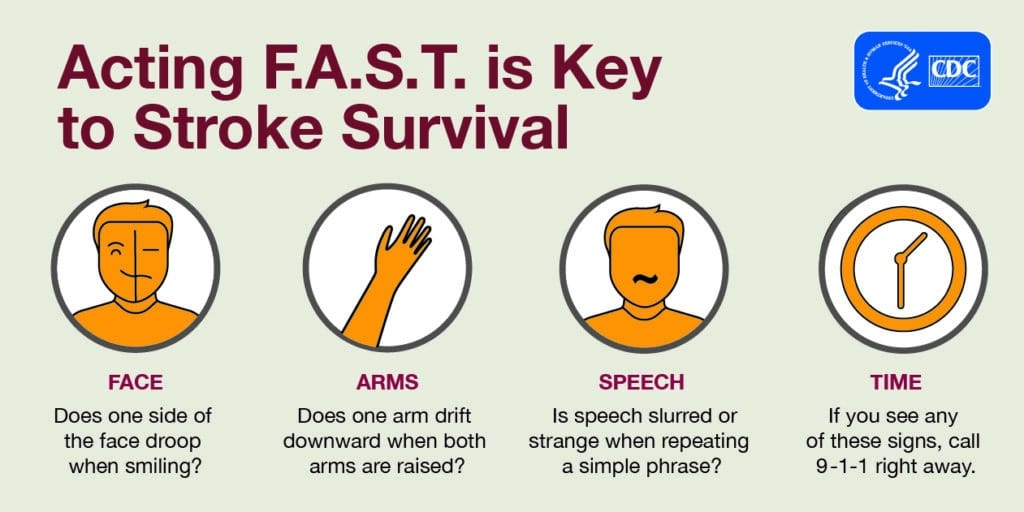Stroke: Signs, Causes, and Treatment

Having a stroke is just as serious as having a heart attack. So, it’s important to know the signs of stroke and act quickly if you suspect you or someone you know is having one. Stroke is the fifth leading cause of death in the United States and is the number one cause of serious adult disability. Stroke risk increases with age, but strokes can — and do — occur at any age. The good news is that most strokes can be prevented, and there are steps you can take that may lower your chance of having a stroke.
What is a stroke?
A stroke happens when there’s a change in how blood flows through the brain. Blood brings oxygen and nutrients to brain cells. If blood can’t flow to a part of the brain, cells that do not receive enough oxygen suffer and eventually die. If brain cells are without oxygen for only a short time, they can sometimes repair themselves. However, once brain cells die, they can’t be repaired. While there is growing evidence that, in some cases, new brain cells help to replace those lost, this takes time and occurs much more slowly in older adults. As a result, someone who has had a stroke may have trouble speaking, thinking, or walking.
There are two major types of strokes:
Ischemic stroke: This is the most common stroke and happens when a blood clot or the narrowing of a blood vessel (artery) reduces blood flow to the brain. This keeps blood from flowing into other parts of the brain and stops oxygen and nutrients from reaching brain cells. Ischemic strokes are commonly caused by:
• Thrombosis: a clot that forms in a blood vessel of the brain or neck
• Embolism: a clot that moves from another part of the body, such as from the heart to the neck or brain
• Stenosis: when a blood vessel in the brain narrows, typically due to fatty deposits lining the walls of the artery
Hemorrhagic stroke: This is the second major kind of stroke. It’s marked by a burst blood vessel that causes blood to leak into or around the brain. This break reduces delivery of oxygen and nutrients to brain cells and exposes the brain tissue to toxic substances that may cause the cells to die. The bleeding also increases pressure inside the skull that can compress brain tissue and cause damage.
Sometimes the symptoms of a stroke last for a short time (minutes to hours) and then go away. This is called a transient ischemic attack (TIA), a mini-stroke, or a warning stroke. TIA is also a medical emergency. You must call 911 and get medical help right away. If a TIA is not treated quickly, it could be followed by a major stroke within hours or days.
The earlier someone with a stroke arrives at the hospital, the more likely they are to receive effective treatment. Don’t delay if you or someone you know experiences any symptoms.
To learn more about strokes and how to lower your risk, from the National Institute on Aging, CLICK HERE.
